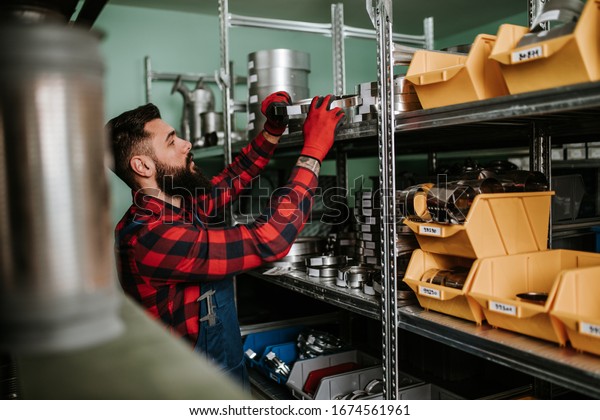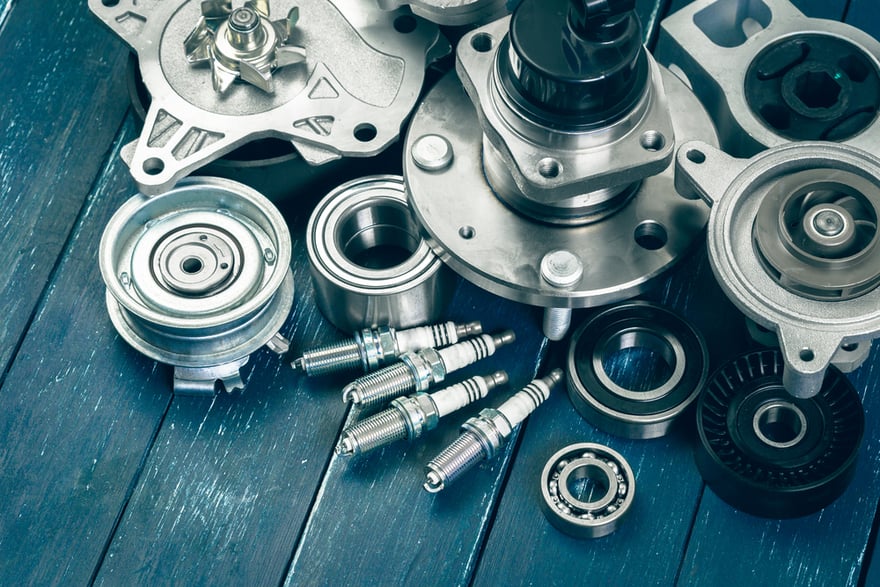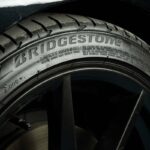Considering a single car contains up to 30,000 individual parts, manufacturing an automobile can be a challenge. Every piece needs to fit together just so in order for the machine to work properly. A single issue could lead to recalls, health and safety issues for drivers and a PR disaster for your business.
With everything that goes into making a car and getting it off the assembly line, speeding up the process isn’t always easy. It requires constant vigilance, precise data and a clean, organized facility where everything falls into its proper place.
Most cars can be made within 17 to 18 hours, with more expensive makes and models taking up to six months. New vehicles are rolling off the floor every 45 to 90 seconds, with the largest facilities pumping out as many as 400,000 cars a year.
If you’re looking to streamline your automotive warehouse, keep these tips in mind:
Itemize Your Entire Facility and Its Contents
You can’t run an automotive warehouse unless you know where each item is placed and how much of it you have left in stock. Itemizing every nut and bolt of your operations may sound tedious–if not impossible–but it will be worth the effort in the end.
Start by attaching barcodes or individual SKUs to each part and accessory, regardless of size or value. Scan every item that comes in and out of your facility to keep an accurate count in your warehouse management system (WMS). You should be able to check the interface to find out how much you have of each item at any given moment. The WMS will also alert you when you are running low in individual items so you can quickly reorder more supplies before you run out entirely.
Use the system to track inventory as it moves through your warehouse. Use remote GPS tags and trackers to locate missing parts and accessories that didn’t end up in the right place.
Standardize Your Products
It’s best to limit the different kinds of parts and accessories coming in and out of your facility. While each vehicle may contain 30,000 individual parts, you may have to multiply that number for every model. To limit the variety of parts used in the manufacturing process, standardize your automobile products to create as much overlap as possible. This means every make and model will use the same kinds of parts so you don’t need to keep as many on-site.
For example, you may only need three kinds of spare tires instead of five or six. Reducing your inventory will help you free up additional storage space. Your employees will be able to reach for the part they need without worrying as much about grabbing the wrong item by mistake.
Consider changing the design of the vehicle so it’s easier to produce. For example, try using the design structure matrix to streamline automotive hood system development.

Keep Your Inventory Visible
Your employees will have to grab a part every few seconds, so make it easier for them to do their jobs. Storing items in concealed containers can be a recipe for disaster when your workers are trying to get products out the door as quickly as possible. They might have trouble finding the exact part or accessory on the shelf, leading to delays. Labeling individual shelves and containers can help, but your workers will still have to open the container to see what’s inside.
That’s why we recommend keeping individual parts and accessories visible in the workplace. Use pallet containers to keep your inventory organized without hiding it from view. They are made with a plastic mesh-like pattern for maximum transparency. Each tote comes with a drop-down opening so your team can quickly reach inside. Your workers will be able to reach for the item they need without second-guessing themselves or opening dozens of containers along the way.

Organize Strategically
As you continue monitoring your operations, experiment with different layouts by reorganizing your inventory so your workers don’t have to travel as far when looking for individual items.
Keep commonly used or misplaced items close to the assembly line to avoid potential delays in production. Your team should be able to grab one of these items in a matter of seconds. Store smaller items at eye-level so the person doesn’t have to bend down or use a stepladder to grab what they need.
For smaller items like screws, nuts and bolts, use stacking totes to keep these items together. They are compact in size with a solid bottom so nothing will slip through the cracks. You can line up dozens of individual trays and totes in a cabinet or on the shelf. Group similar items together to reduce confusion during the picking process. You can also use color-coded containers for more accuracy and visibility.
Work with Your Employees
As helpful as all this data and planning can be, never underestimate the power of good, old-fashioned people power. Your employees will be on the floor running the show, so ask them to be your eyes and ears instead of solely relying on your warehouse management system.
Your employees should get in the habit of conducting regular spot checks, returning misplaced items to the correct location. If something looks out of place, they should quickly correct the situation or bring it to someone’s attention so they can fix the problem right away.
Keep your drivers and fleet in great working condition. Ask your drivers to report problems on the road as they appear. Use this list of fleet maintenance tricks to increase efficiency and reduce downtime.
Every detail counts when it comes to manufacturing automobiles. They are some of the most expensive and complicated products to make, so do your best to simplify the process for your employees. Shaving just a few seconds off these routine tasks will add up over time so you can make the most of your current operations.














